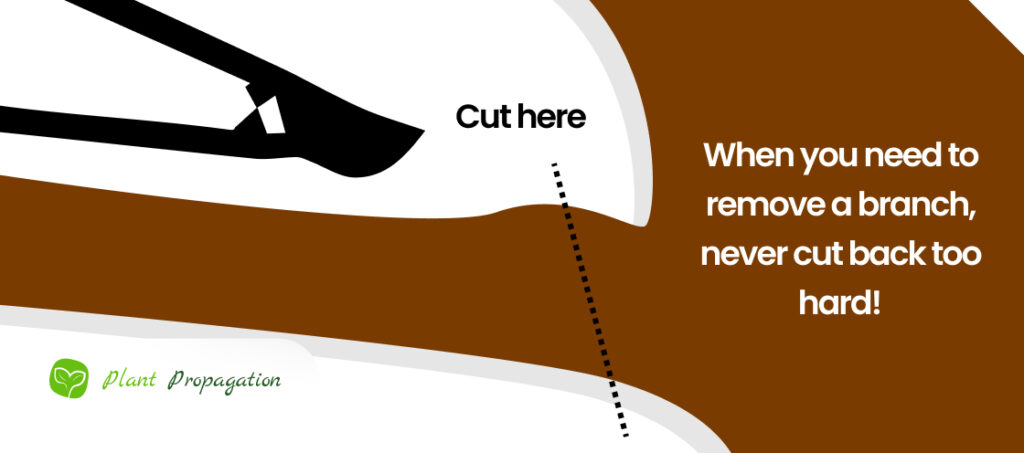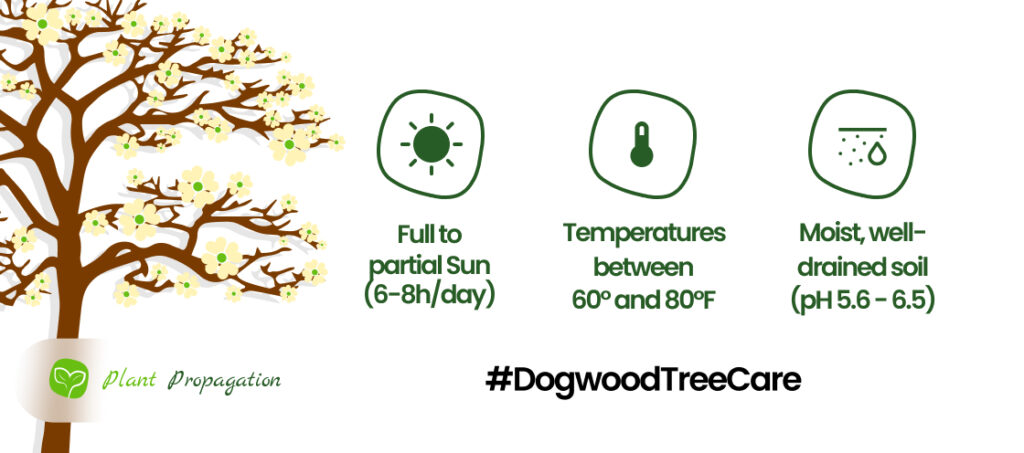
Dogwood trees may not need annual pruning, yet when it’s time to trim, precision is paramount. Pruning is more than an aesthetic endeavor; it’s a vital step in nurturing your tree’s health and beauty. We will explore the underlying principles of ‘why’ and ‘when’ to prune dogwood trees. While annual pruning isn’t mandatory, from time to time you need to remove diseased branches and water sprouts.
Our guide will take you through why pruning dogwood trees is needed sometimes, when to do it, the tools you’ll need, the step-by-step process, and what to do afterward.
Why you should Prune a Dogwood Tree
So, why should you even think about pruning your dogwood tree in the first place? Well, it’s not just about aesthetics, though that’s a big part of it. Pruning keeps every tree healthy, happy, and looking its best.
Pruning Benefits for Dogwood Trees
- Promoting Health: When you prune, you remove dead or diseased branches, reducing the risk of diseases spreading to the healthy parts of the tree. Think of it as a quarantine for branches.
- Enhancing Aesthetics: Your dogwood tree will thank you for getting rid of those awkward, overgrown branches. A well-pruned tree is a beautiful tree.
- Managing Growth: Controlling the size and shape of your tree keeps it from turning into an unruly monster. Nobody wants a tree that’s taken over the whole yard!
When to Prune Dogwood Trees
Now that you know why you should prune, let’s talk timing. Timing is everything, especially when it comes to pruning dogwood trees.
Don’t Prune in the First Year
First things first, if your dogwood tree is a fresh addition to your garden, hold off on the pruning shears. It needs that first year to establish its roots and grow strong. Think of it as tree kindergarten.
Why Should You Always Prune in Winter
Winter or very early spring is the safest time for pruning your dogwood tree. Your tree’s in its dormancy phase, which means it’s less stressful for the tree, and it’s less likely to attract unwanted pests and diseases.
However, if your goal is to get more blooms from your tree, you might want to prune in late spring or early summer. Remember that your tree is more susceptible to diseases and pests if you decide to do so.
The Tools You’ll Need
Before you dive into pruning, you’ll need the right tools. Nothing fancy, just the right tools for the right job. Here’s what you’ll need:
- Pruning Shears: These are like the scissors for your tree. They come in different types, like bypass pruners and anvil pruners. Bypass pruners work like scissors, making clean cuts, while anvil pruners use a blade to crush the branch. Bypass pruners are usually your best bet.
- Loppers: For those thicker branches that are a bit too much for pruning shears. They have long handles for extra leverage.
- Hand Saw: When you need to take down larger branches, a hand saw is your friend.
- Safety Gear: Don’t forget gloves and safety glasses. You want to keep your fingers and eyes safe.

Pruning Dogwood Trees Step-by-Step
1. Removing Deadwood & Crossing Branches
Look for deadwood, those withered, useless branches that need removal. Additionally, assess the branch structure, checking for any instances of branches crossing each other or growing inward. If you see any branches that are rubbing against each other, you should remove those too, because the wound that the tree causes to itself is basically an open invitation for diseases and pests to get into your tree.
Thinning Cuts: These involve removing an entire branch at its point of origin, making room for sunlight and air to flow. You want your tree to heal the wound fast, so make sure you do not cut back to hard. (see in pic)

2. Removing Water Sprouts
One particular concern with dogwood trees is the prevalence of water sprouts. Unlike suckers, which originate from the ground, water sprouts emerge higher on the tree. While not all should be removed, a careful balance must be maintained.
Frequent hard pruning is a no-go for these trees, as it can encourage excessive water sprouting. You want to get rid of the thinner, smaller water sprouts that won’t mature into branches. Meanwhile, for the taller, more robust water sprouts, heading cuts should be made to prevent them from outgrowing the main branches. This approach ensures your dogwood tree maintains its desired form and structure.
Aftercare
Phew, the hard part is over! Now it’s time for some post-pruning care.
- Proper Disposal: Don’t just toss those pruned branches in your garden. They could be carrying disease. Get rid of them properly, either by chipping or burning.
- Monitoring the Recovery: Keep an eye on your tree. It’s been through a bit of a trim, and you want to make sure it’s healing well.
- Addressing Common Issues: Sometimes, despite your best efforts, issues might pop up. If you see signs of disease or insect infestations, deal with them promptly.

Conclusion
You’ve just mastered the art of pruning your dogwood tree! You’ve learned why it’s important, the best time to do it, the tools you’ll need, and the step-by-step process.
- Pruning promotes tree health, eliminates dead or diseased branches, enhances aesthetics, and manages growth.
- Avoid pruning in the first year; opt for winter dormancy. Late spring or early summer pruning can yield more blooms but raises disease risk.
- You need pruning shears, loppers, a hand saw, and safety gear.
- Remove deadwood and prevent branch crossings. Keep an eye out for water sprouts. Avoid hard pruning and trim water sprouts appropriately.
Don’t forget the aftercare to ensure your tree stays healthy and happy.
Frequently Asked Questions
Winter or very early spring is the safest time for pruning your dogwood tree. Your tree’s in its dormancy phase, which means it’s less stressful for the tree, and it’s less likely to attract unwanted pests and diseases.
Can I prune a young dogwood tree, or should I wait?
Dogwood trees don’t usually need lots of pruning. But once your tree’s been around for about a year, it’s a good idea to give it a light trim every year. Why? Well, when your tree’s just a baby (less than a year old), it’s like it’s in its “development year,” so you want to go easy on it and let it build up strong foundations without the need to repair itself.
What is the lifespan of a dogwood tree?
With proper care, including annual pruning, your dogwood tree can live for over 80 years. Flowering dogwoods are some of the sturdiest, but if you want it to last a century, watch out for Dogwood Anthracnose (caused by Discula destructive). This nasty fungus can knock out your tree in just two years.
How do you prune a kousa dogwood tree?
When it comes to Kousa dogwoods, a light touch is the key to successful pruning. Aim to trim no more than 10% of the tree. Remember, the goal here is to prune for a pleasing shape, not to shrink its size. Topping it off will only lead to a bunch of unsightly water sprouts.

